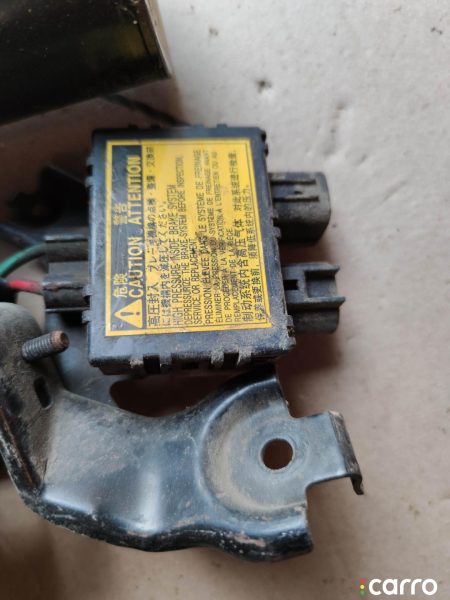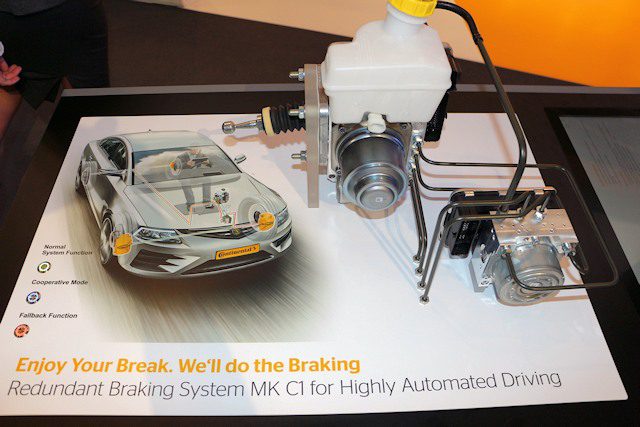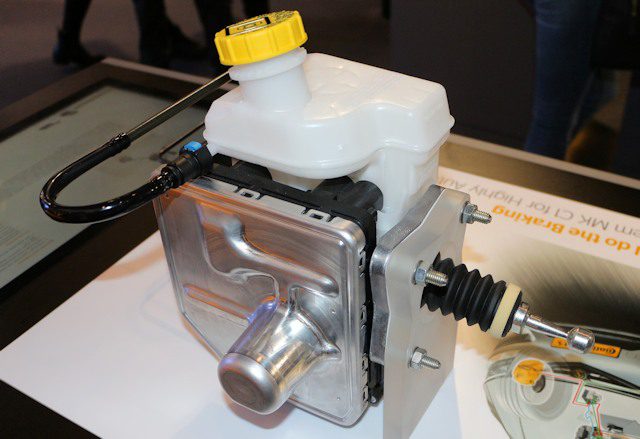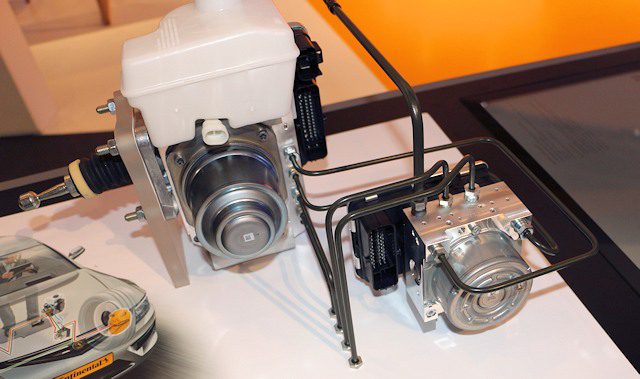
Freinage IBS / By wire

If the brake pedal of modern cars is mechanically connected to the braking system, the situation starts to seriously change ... So let's see what kind of braking is called "by wire" or IBS for an integrated braking system. Please note that the Alfa Romeo Giulia is one of the first vehicles to use this system (supplied from continental Europe), so it is already present in the new market. Mercedes has been using this technology for some time now with the SBC: Sensotronic Brake System, again showing that the star is often ahead...
See also: work of "classic" brakes on a car.
The basic principle
As you probably already know, the braking system of a car is hydraulic, that is, it consists of pipes filled with fluid. When you brake, you put pressure on the hydraulic circuit. This pressure then presses against the brake pads, which then rub against the discs.
When braking the IBS, there is always a hydraulic circuit, with the difference that the brake pedal is no longer directly connected to it. Indeed, the pedal (of current systems) is really just a "big syringe" that is depressed to create pressure in the circuit. From now on, the pedal is connected to a potentiometer (instead of the main hydraulic cylinder), which is used to tell the computer how deeply it is pressed, just like a pedal in a video game simulator. Then it is a computer-controlled electro-hydraulic module that will brake for you, causing brake pressure to each wheel (this transfers hydraulic pressure to the ABS / ESP unit, which takes care of distribution and regulation), more or less depending on the pressure on the pedal.
Classic system IBS system
The vacuum pump (1) is missing on the right. The electrohydraulic module (2) replaces the master cylinder (2) and the master vacuum (3) in the diagram on the left. The pedal is now connected to a potentiometer (3), which sends information to the electro-hydraulic module via electrical cables and a computer.



Here's the device in real life, thanks to Continental (supplier and manufacturer) for showing it and explaining it at the 2017 Frankfurt Motor Show.
SBC - sensor-assisted brake control - how it works
(Image by LSP Innovative Automotive Systems)
In the future, hydraulics should disappear to have only electric drives.
About Formula 1?
On F1 vehicles, the system for rear brakes pretty close, except that the potentiometer consists of a mini hydraulic circuit. Basically, the pedal is connected to the master cylinder, which will create pressure in a small closed circuit (but also in the circuit connected to the front brakes, the pedal is connected to two master cylinders, one for the front axle and the other for the rear axle). The sensor reads the pressure in this circuit and shows it to the computer. The ECU then controls an actuator located in another hydraulic circuit, the rear brake circuit (this part is identical to the IBS system described earlier).
Advantages and disadvantages
Let's be clear, there are more advantages than disadvantages here. First of all, this system is lighter and less cumbersome, which makes the car more economical, but also reduces construction costs. There is no longer a need for, for example, a vacuum pump, which helps with braking in existing systems (without this pump, the pedal will be stiff, which happens when the engine is not running. Does not rotate).
The electrical braking control provides greater braking precision, the pressure of the human foot does not interfere with the machine, which then controls the full (and therefore better) braking of the four wheels.
This system also encourages cars to become autonomous. They really needed to be able to slow down on their own, so it was necessary to isolate human control from the system, which should then be able to work alone. This simplifies the entire system and therefore costs.
Finally, you no longer feel the typical pedal vibrations when the ABS is engaged.
On the other hand, we're just noting that the feel can be worse than hydraulics, a problem we've known in the past when switching from power-assisted steering to electric versions.
All comments and reactions
Dernier comment posted:
Author (Date: 2017 12:08:21)
Code IBS IBIZA 2014
Il I. 1 reaction (s) to this comment:
- Administrator SITE ADMINISTRATOR (2017-12-09 09:45:48):?!
(Your post will be visible under the comment after verification)
Write a comment
How much did the last revision cost you?

